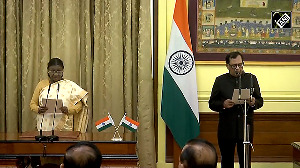The speed of the courts would continue to play in the medium to medium-fast range, would be firmer and would also have lower heat retention to reduce the chances of the event's extreme heat policy being invoked, Tournament director Craig Tiley said.
Tiley said the new surface would also have more consistent pace and bounce.
"The court characteristics for next year's Australian Open will be very similar to what we achieved in 2007, with the surface playing in the medium to medium-fast range," Tiley said in a statement.
"The annual review of the courts had to be more extensive this year because of their age and condition. Once it was established that a major rebuild was required, an exhaustive selection process was undertaken."
Tiley insisted the court was not classified as hard, maintaining its difference from the other grand slam events on the calendar, particularly the U.S. Open at Flushing Meadow.
Former U.S. Open and Wimbledon champion Lleyton Hewitt has long been a critic of the Rebound Ace surface used at Melbourne Park, saying a faster court would improve his chances of winning his home grand slam event.
Organisers used the extreme heat policy in Melbourne in mid-January when temperatures soared above 40 degrees Celsius on court, with several players forced to retire under the intense conditions.
Work on the new surfaces will begin immediately, Tennis Australia said.






